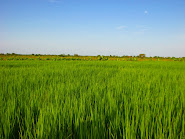Here's what the Peace Corps sent me, word for word, in a booklet with my invitation. It's quite long so I've just included a couple of the sections now and will get to my actual assignment next time. IF YOU WANT TO KNOW WHY I'M BEING SENT THERE, TAKE THE TIME TO READ BELOW.
YOUR ASSIGNMENT
Country: Burkina Faso
Program: Secondary Education
Job Title: Science Teacher
Dates of Service: August 24, 2007 - August 23, 2009
Orientation Dates: June 4-6 2007
Pre-Service Training (in Ouahigouya, Burkina Faso): June 7, 2007 - August 24, 2007
Please review all the information in this packet and call your placement officer with your acceptance or any questions in 10 business days.
HISTORY OF THE PROGRAM
Peace Corps was first invited to Burkina Faso (formally named Upper Volta) in 1966. For over two decades, Volunteers were engaged in a number of program areas, including teaching, agriculture and forestry. Unfortunately, strained political relations between Burkina Faso and the United States, from 1983-1987, culminated in the closure of Peace Corps programs in 1987. However, the former government's request that Peace Corps leave Burkina Faso did not reflect popular sentiment towards Peace Corps and in 1991 the newly established government requested Peace Corps' return to Burkina Faso. Throughout the years, Burkina Faso has been known as a desirable place to live and work with hard-working people, a welcoming culture and programming that affords most Volunteers the opportunity for a productive grassroots development experience.
Development efforts in Burkina Faso are important because Burkina Faso is one of the ten poorest countries in the world. "The Fight Against Poverty," the title of the Government of Burkina Faso's (GOBF) ten-year development plan, is a fitting description of the development climate in Burkina Faso. Burkina Faso ranks 175 out of 177 countries in the UNDP's Human Development Index: of countries with a Peace Corps presence, only Niger rates lower. Statistics paint a grim picture: average life expectancy at birth is 47.5 years; approximately 50% of the population is under the age of 15; the adult literacy rate is only 12.8%; the net primary school enrollment is 36% of the school age population (the number drops to 31% for primary school aged girls); the combined gross enrollment ration for primary, secondary and tertiary schools is just 24%; only 9% of eligible students enroll in secondary school, and ; less that 1% of Burkina's school age population reaches the University level. Burkina Faso's population grew from 3.5 million in 1960 to 6.2 million in 1975, and now, having doubled in 25 years, stands at 12.6 million. Burkina Faso's population is expected to reach 18.5 million by 2015. The annual population growth rate as well as the rate of urbanization is on the rise, further taxing the fragile infrastructure of the country. HIV/AIDS poses another growing challenge. Official statistics show that between 2.3% and 4.2% of the adult population is infected with HIV/AIDS. Nearly 86% of the population lives on less than $2 a day. If Burkina Faso is to compete and thrive in the 21-st century, these trends need to be addressed and significant changes will be necessary.
Despite the alarming statistics, there is room for hope. The GOBF's "Fight Against Poverty" embraces a multi-sectoral and integrated approach to development. Burkina Faso is supportive of private and public sectoral initiatives and partnerships. Efforts are underway to improve social and economic development. The GOBF has gained eligibility for Africa Growth and Opportunity Act (AGOA) trade status, for the Threshold Program of the President's Millennium Challenge Account (focused on girls' education) and, most recently, for the Millennium Challenge account itself. The GOBF embraces its partnership with Peace Corps and is a fill and active participant in all Peace Corps programs. In addition, the nation's hardworking and industrious workforce makes efficient use of available and new resources. Burkina Faso is peaceful, stable and making steady progress towards transparent and Democratic governance.
Peace Corps program areas in Burkina Faso continue to evolve over time. A group of 17 Public Health Volunteers arrived for the first time in December 1995 and the Education program reopened in June 1997 with 33 trainees. Small Enterprise Development and Girls' Education and Empowerment started respectively in 2003 and 2005. As of August 2006, 90 volunteers work in Burkina Faso including 18 in Health, 21 in Small Enterprise Development, 24 in Education, and 26 in Girls' Education and Empowerment.
PROJECT BACKGROUND
The Ministry of Education has currently identified the need for approximately 1000 additional secondary school teachers. The largest need, approximately 600 teachers, is for math and science teachers. For the foreseeable future, Burkina Faso will require teachers from other countries to help fill its need for teachers. The Ministry has requested the Peace Corps fill positions in the following areas of Burkina Faso: the East, Sahel, North, Central North, and the Boucle du Mouhoun. You will most likely be assigned to one of these areas - where the need for teachers is the greatest.
Saturday, March 31, 2007
Subscribe to:
Post Comments (Atom)


1 comment:
Ok. Thank you. And what about internet in Burkina? Serge Michel already found Dakar web log writers for the Bondy Blog. See the average page. I could translate in french an answer on the subject. Do not hesitate to inform me by living a message on my blog if you can do it.
My blog
Pierre Murcia
Post a Comment